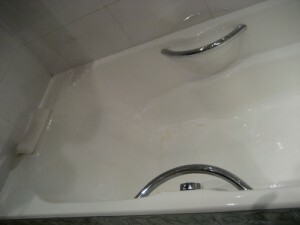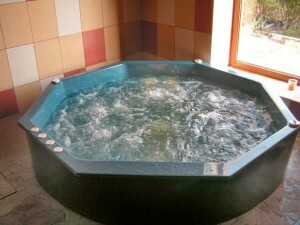Content
- Natural and reverse osmosis
- Filter operation process
- Characteristics of reverse osmosis filters
- Pros of household reverse osmosis systems
- Myths and the truth about reverse osmosis
- Myth number 1. As a result of this purification, water is deprived of all minerals and becomes “dead”
- Myth number 2. Water that has passed through reverse osmosis cleanses the minerals it needs from the body
- Myth number 3. Teeth will crumble from such water
- Myth number 4. Treated water becomes tasteless
The technology that allows you to desalinate salt water and clean fresh from impurities dissolved in it is called reverse osmosis. The question of what reverse osmosis carries - harm or benefit to our health - arises before everyone who wants to choose an effective device for treating drinking water. Consider the features, main disadvantages and advantages of such a filtration system, widely used in household filters, to determine the answer to this question.

The reverse osmosis system was developed over a century ago, but its real application began in the second half of the twentieth century. Initially, a similar filtration method was used in industry, and after it was possible to minimize the costs and size of the device, it began to be used in everyday life.
Disputes about whether reverse osmosis is harmful to health or good have not subsided for many years.
Natural and reverse osmosis
To understand the goals and processes of reverse osmosis, consider the phenomenon of direct osmosis.
Osmosis is called one of the most important natural phenomena. His example is the absorption of water by plant roots from the soil. A suspension with a lower concentration has a natural tendency to migrate to a solution with a higher concentration, passing through a semi-permeable membrane under pressure.

With reverse osmosis, we observe a process opposite to the phenomenon described above, when the liquid is freed from the particles dissolved in it. Osmosis occurs naturally without the use of energy. To reverse the process, pressure must be applied to a more complex saline solution. In this case, the membrane plays the role of a kind of door that allows only substances whose dimensions are smaller or equal to the diameter of water molecules (oxygen, chlorine and some other impurities freely penetrate her).
USEFUL INFORMATION:Why do you need a carbon filter for water: what it cleans, options for use
This effect was discovered even in Ancient Greece, where at a primitive level it was used to desalinate liquids. However, in widespread use, reverse osmosis appeared only after the appearance of synthetic membranes (cellular acetates) in the 1970s. And with the advancement of technology began to be widely used for home cleaning.

Water after reverse osmosis is considered environmentally friendly, in its characteristics it resembles meltwater from ancient glaciers.
Filter operation process
Source water flows into reverse osmosis filter from a water tap, all separated impurities are discharged into the sewer along with drains. The cleaning process is divided into several stages:
- Preliminary cleaning. At this point, water passes through three filters. The first polypropylene filter cleans the liquid from rust, sand, solids, particles larger than 5 microns. The second, coal, will delay petroleum products, pesticides, chlorine, heavy metals, chemical and organic impurities. The third, single-micron, does not pass impurities larger than 1 micron.
- The passage of fluid through the membrane, which is the most expensive filter element. How long it will last depends on the quality of the incoming water. The pores in the membrane have a size of not more than 0.0001 microns. They let water molecules, oxygen and some gases pass through, affecting the taste of the liquid.
- Accumulation of purified water in a special tank made of enamelled steel sheets.
- Passing through an optional filter, which serves as another guarantee of fluid cleanliness.
- Spill through separate tap embedded in a countertop or sink.

The process is shown in detail in the following video:
Characteristics of reverse osmosis filters
Reverse osmosis filters have the following features:
- Produce from 120 to 300 liters of pure water per day.
- Resource of use from 4 to 15 thousand l To make it clear, 4000 liters is enough for an average family of 4 for about 24 months.
- At the exit we get the purest water, purified from all kinds of impurities, bacteria and viruses, if their dimensions exceed the pore size of the membrane.
- Pre-filter cartridges need to be replaced once every 6 months, and additional final filters - once every 12 months. The reverse osmosis membrane works for 2-3 years. Any person can carry out the replacement process without additional knowledge and tools.
- Household filters are installed in apartments, private houses, cottages, small offices.
USEFUL INFORMATION:How to replace the water supply in the apartment

Pros of household reverse osmosis systems
In addition to the fact that as a result of such treatment we get water that is ideal for drinking, reverse osmosis has other significant advantages:
- Both tap water and other surface sources can be cleaned.
- To maintain a semipermeable membrane in working condition, no chemicals are required. That is why reverse osmosis filters are considered safe and suitable for domestic use.
- Such filters are durable devices. A family can use one filter for several years. The choice of such a system will positively affect the family budget.
- The storage tank of the reverse osmosis filter for 4-12 liters makes it possible to have at its disposal a certain supply of clean water.
- Using a filter, water is cleaned of harmful viruses and bacteria, such as hepatitis. Removal of harmful impurities from water favorably affects the general condition of the body.

Unfortunately, in our world there are no perfect things, therefore reverse osmosis filters have their drawbacks:
- Semi-permeable membranes have the property of quickly clogging with compounds of heavy metals, from which they need preliminary treatment. Otherwise, further work will not be possible.
- It is not recommended to connect the reverse osmosis filter to hot water, this will affect the effectiveness of the process.
- The filling rate of the storage tank is quite low. The process can take 2 hours.
An excellent representative of reverse osmosis - Atoll filter A-550m STD

The high-quality filter is equipped with a special mineralizer cartridge. This allows not only to make water clean, but also to saturate it with useful substances.
Filter performance Atoll A-550m STD enough for a family of 4-5 people. Products are supplied with all necessary components, including a drinking water tap.
USEFUL INFORMATION:Energy-saving technologies: the basics of energy saving in an apartment
Myths and the truth about reverse osmosis
Among potential consumers, word of mouth spreads many legends that are not supported by facts about how harmful reverse osmosis is for the human body.
Myth number 1. As a result of this purification, water is deprived of all minerals and becomes “dead”
On the body itself, it turns into weakly mineralized (10-15 mg / l). While the reference meltwater from glaciers, the same indicator is 2-5 mg / l. In this process, heavy metals, radionuclides, silt, sand, pathogenic bacteria, phenols and pesticides are removed during the cleaning process. Those who are worried about this may additionally install a mineralizer. Sometimes this device is sold with a filter.
Myth number 2. Water that has passed through reverse osmosis cleanses the minerals it needs from the body
Such a statement has not been confirmed by any study. On the contrary, cleaned water works like a magnet, which collects waste, rejected substances through your body and carries them to your lungs and kidneys for speedy elimination.
Myth number 3. Teeth will crumble from such water
This statement came from an advertising company of one of the filter manufacturing companies. They argue that prolonged use of fluoride-free water will adversely affect tooth health. As practical studies have shown, consumers of cleaned water have no such problems.

Myth number 4. Treated water becomes tasteless
This myth is actively spreading and confusing many consumers. On the one hand, this is true, because we are used to drinking chlorinated water with a high content of heavy metals. The metallic taste in the tongue is familiar to us and even pleasant. But crystal clear water should not have it.
With the daily use of water purified by a reverse osmosis system, the taste of culinary will be revealed in a new way masterpieces, you will find out what your favorite coffee or tea really is, if you don’t feel the taste of chlorine when you drink them and iron. The body will recover, stones and sand from the kidneys will begin to wash out.


